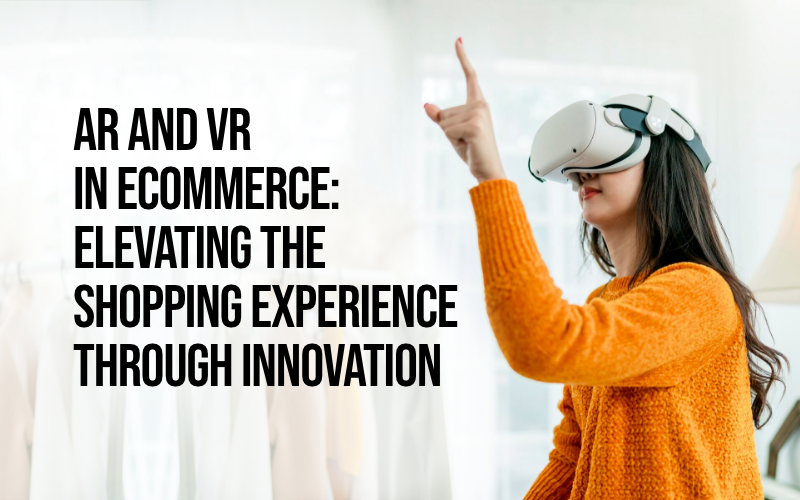The e-commerce landscape is transforming at an unprecedented pace. Several technologies have emerged as game-changers, upturning the customer experience like never before.
Out of all these notable technologies, augmented reality and virtual reality have been the two prominent names that have completely revolutionized the engagement game. AR, on the one hand, with its transformative abilities, can seamlessly blend the physical and virtual worlds. VR, on the other side, offers experiences beyond the limits of reality, ushering consumers to interact with business offerings.
For this reason, businesses often look for tech partners with expertise in providing AR/VR-intensive eCommerce App development services. But the question is — how the combination of these two technologies is elevating the shopping experience? Let’s dig in to understand it better.
The Impact of AR and VR in the E-Commerce Sector
AR and VR are technological marvels in the e-commerce domain that enhance the way we engage with digital content. Although the two are not interconnected, their working principle and purpose are considerably the same — to augment consumers’ shopping experience.
Below are some stats and facts that show the ever-rising impact of AR and VR in the e-commerce industry:
- The immersive experience offered by VR technological solutions has improved customer satisfaction levels by 30%.
- The role of augmented reality in e-commerce is rapidly evolving, especially after the online stores adopting this technology experienced a 20% increase in conversion rates.
- Many e-commerce platforms leveraging advanced AR and VR solutions have experienced remarkable growth in sales with some reporting it touching the 40% mark.
- The global AR/VR market revenue in retail is projected to reach $17.86 billion in the next five years.
- In fact, a Google survey reported that more than 66% of consumers would like to shop using AR features.
How Do AR and VR Elevate Shopping Experience with Innovation?
Businesses can use AR and VR in several ways to improve customer experience and increase shoppers’ engagement. Below are some practical applications of these two technologies in the e-commerce industry.
Visualizing Products with Virtual Try-Ons
Powered by augmented reality, virtual try-ons allow consumers to conceptualize products like footwear, clothing, and make-up. It is one of the best ways to enhance their shopping experience while minimizing the chances of product returns. Several retail stores incorporated with autonomous features have also employed smart mirrors to enhance the in-store experience of the customers.
Analyzing Products in Virtual Showrooms
Popular brands like Ralph Lauren, Tommy Hilfiger, Hugo Boss, and many more have virtual showrooms where shoppers can immerse themselves in a 3D store setting. This feature helps them analyze products from all angles without stepping out from the comfort of their homes. From zooming in on intricate details to visualizing how the product will look, virtual showrooms are one of the best ways to offer a 3D product experience.
Enhanced Shopping with AR-based Virtual Assistants
Several e-commerce platforms integrate AR-based virtual assistants powered by AI to serve as shopping guides for consumers. These shopping bots provide personalized recommendations based on customer preferences, needs, and store availability. Besides, these assistants can also help users resolve their queries regarding product demands, fashion styling, and ongoing offers.
Product Descriptions in an Interactive Manner
Today, consumers prefer things that are interactive, and that apply to everything — even product descriptions. That’s one of the reasons why several businesses have replaced static product descriptions with dynamic AR-powered ones. Customers can scan these product descriptions with their smartphones to get detailed information in an interactive manner. It can include 3D visualizations or videos showcasing how the product works.
Increased Engagement with Store Window Displays
Another innovative solution in the realm of the retail industry is AR-enabled store window displays that could be transformed into interactive showcases. Tiffany & Co, Barneys, and Gucci are some popular brands that leverage intriguing store window displays to attract potential shoppers. These customers can engage with the displays to explore discounts and deals offered by the brand and receive product information, all by using their mobile devices.
Final Thoughts
The ever-rising growth of AR and VR suggests that these technologies have become integral to the omnichannel shopping experience. By integrating these solutions, businesses not only increase their customer engagement but also solidify their brand positions in the market.
The power of AR/VR solutions offering personalized experiences helps brands boost their sales and increase brand credibility. Although they might not replace physical stores, they can surely become an ideal shopping alternative, elevating and enriching the in-store journey for consumers.


